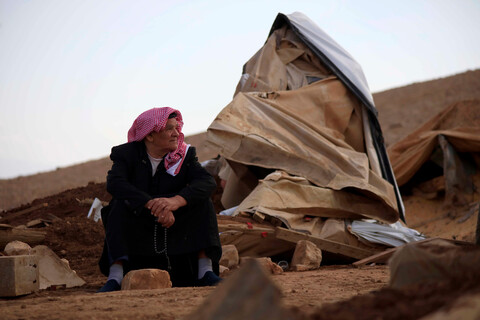The Electronic Intifada 3 December 2019
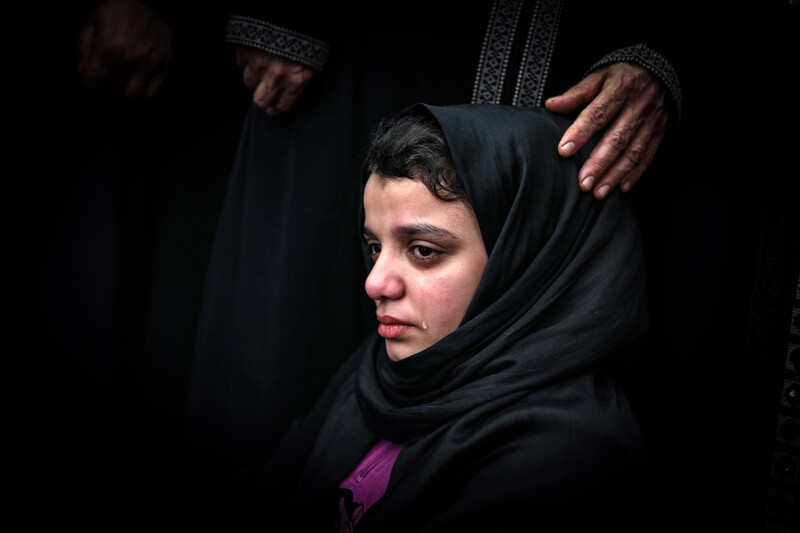
Fatma Abu al-Ata mourns during the funeral of her father Baha Abu al-Ata, an Islamic Jihad commander who was killed along with his wife Asma in an Israeli strike on their home, 12 November.
ActiveStillsNovember marked the deadliest month for Palestinians since May 2018, when occupation forces massacred more than 60 people during a single day of protests along the Gaza-Israel boundary.
Forty Palestinians lost their lives in November as a result of occupation-related violence.
Among them are two young Palestinian men killed by Israeli soldiers in the West Bank.
Omar al-Badawi, 22, was shot and killed during confrontations at the entrance to al-Arroub refugee camp near Hebron on 11 November. The Israeli military claimed that al-Badawi was carrying an incendiary device.
Video of the incident indicates that al-Badawi posed no danger to soldiers when they shot him. A subsequent investigation found that al-Badawi was carrying a wet towel to extinguish a fire that ignited outside his home during the confrontations when he was killed.
On 30 November, Badawi Khaled Masalmeh, 18, was shot and killed by Israeli soldiers in Beit Awwa village near Hebron. The military claimed it had hit a Palestinian who had thrown Molotov cocktails at an Israeli vehicle. Soldiers reportedly prevented Palestinian medics from providing first-aid to Masalmeh.
In Gaza, Ahmad al-Shahri, 27, was killed in an Israeli airstrike in Khan Younis, in the southern area of the territory, on 1 November.
Gaza family killed
On 12 November, Israel fired a missile into the Gaza City home of an Islamic Jihad commander, killing him and his wife and setting off two days of intense fire across the Gaza-Israel boundary.
The hostilities resulted in the killing of more than 35 Palestinians, around half of them civilians, including eight children and three women. There were no Israeli fatalities.
In the deadliest single incident, eight members of the al-Sawarka family, including five children, were killed when Israel bombed their tin-roofed home in Deir al-Balah on 14 November. A ninth member of the family died days later.
Three members of another family, among them a 7-year-old child, were killed as they were on a motorcycle in front of their Gaza City home on 13 November.
They were targeted as they were rushing to a hospital after a relative had been injured in a separate attack.
Israeli forces killed two boys in a strike on a carpentry shop in Gaza City that same day. Their father, who owned the shop, and two other men affiliated with Islamic Jihad’s military wing were also killed.
“During the escalation, Palestinian factions fired hundreds of rockets and mortars at Israel, resulting in 78 Israelis being treated for light injuries or shock,” the United Nations monitoring group OCHA stated.
Damage
Israel’s bombing of Gaza over two days caused an estimated $3.1 million in direct damages, according to the Office of Public Works and Housing in the territory.
Five hundred housing units were hit and 30 were damaged or destroyed and became no longer habitable, with an estimated reconstruction cost of $2 million.
The weekly Great March of Return protests along Gaza’s boundary with Israel were suspended after the two-day escalation, but independent protests were held. Fahd al-Astal, 16, was shot in the stomach and killed at one such demonstration in Khan Younis on 29 November.
More than 130 Palestinians have died by Israeli fire so far this year, an average of nearly three killed per week.
Ten Israelis died as a result of Palestinian attacks during the same period. However, Israeli prosecutors have walked back the attribution of nationalist motives to the rape and murder of 19-year-old woman in February.
Meanwhile, Palestinian prisoner Sami Abu Diyak succumbed to cancer in Israeli custody on 26 November, amid accusations of years of medical neglect.
Abu Diyak is the fifth Palestinian to die in Israeli custody this year.
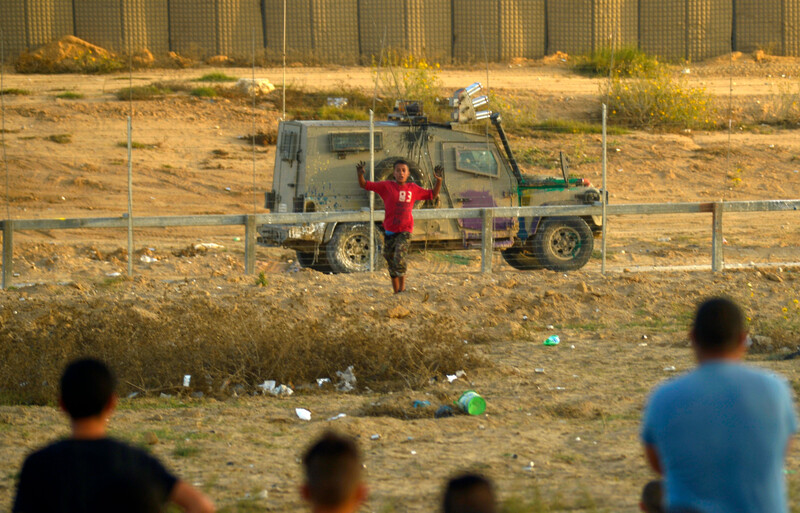
Palestinians take part in the weekly Great March Of Return protests along the Gaza-Israel boundary on 1 November.
ActiveStills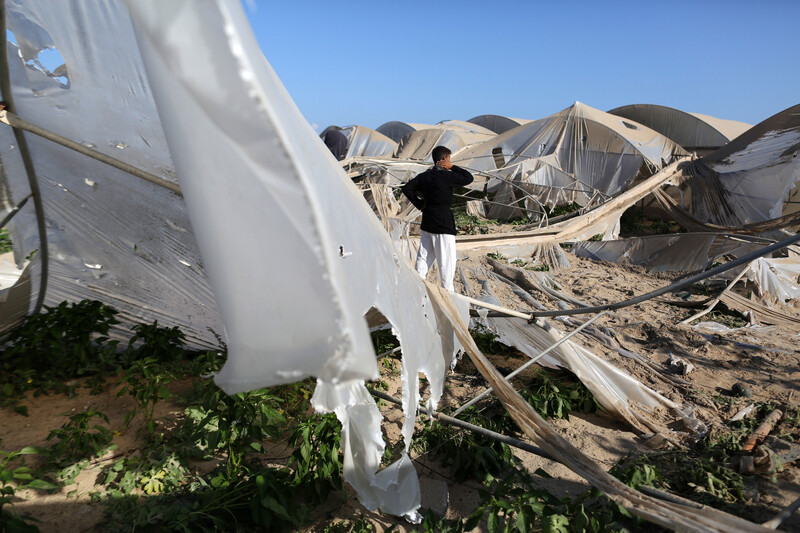
A Palestinian observes greenhouses damaged in an Israeli airstrike in Khan Younis, southern Gaza Strip, on 2 November. Dozens of strikes hit the besieged Gaza Strip in the early morning following rocket fire from Gaza. Israel targeted several training sites and outposts affiliated with Hamas, according to Palestinian media. Ahmad al-Shahri, 27, was killed during the strike and two others were wounded while they were sitting in an orchard adjacent to one of the posts that were hit.
ActiveStills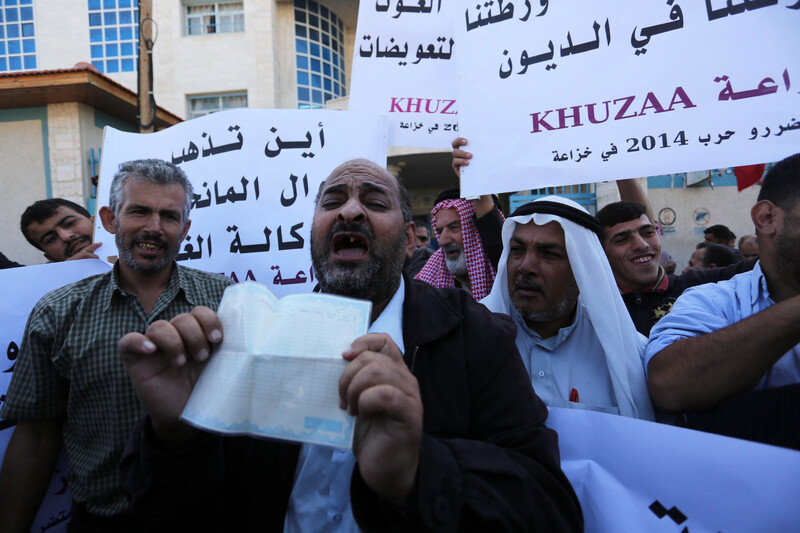
Palestinians whose homes were destroyed during Israel’s military offensive in Gaza in 2014 protest in front of the headquarters of UNRWA, the UN agency for Palestine refugees, in Khan Younis, southern Gaza, on 5 November. Nearly 18,000 housing units were destroyed or badly damaged during the offensive, and “there is a deficit in funding still needed to rebuild about 2,000 homes,” the human rights group Gisha stated in November.
APA images
Palestinians protest in solidarity with women held in Israeli jails in front of the Red Cross offices in Gaza City, 6 November.
APA images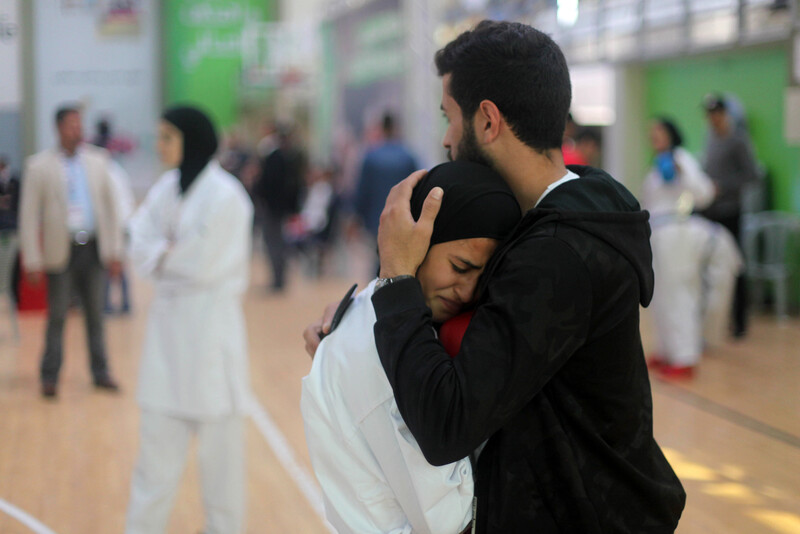
A player is comforted during the Palestine Karate Championship at the Gaza Sports Club in northern Gaza on 8 November.
APA images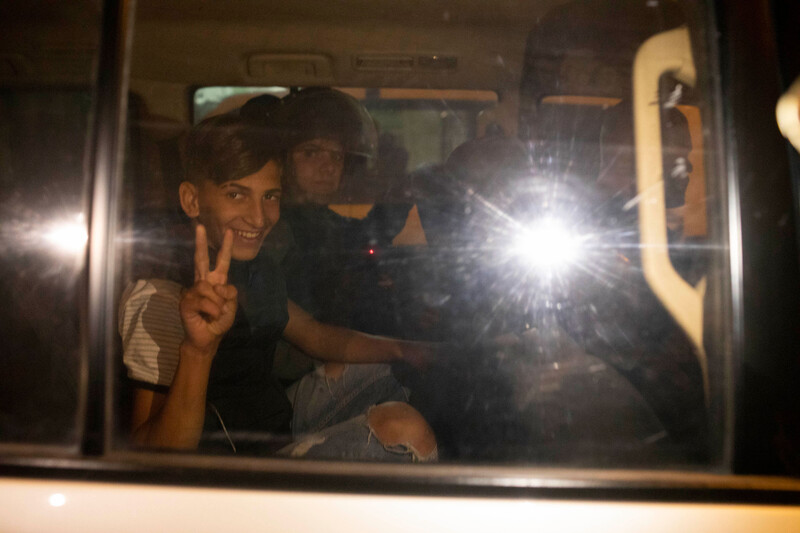
A Palestinian is detained in the East Jerusalem neighborhood of Issawiya as part of a police operation that started six months ago and includes daily and nightly raids, arrests and house searches, 10 November.
ActiveStills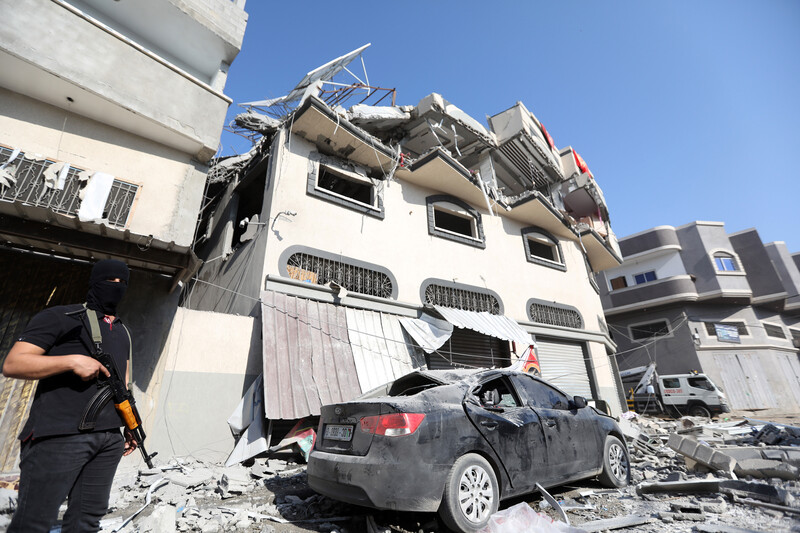
The home of Islamic Jihad commander Baha Abu al-Ata on 12 November after being hit in an overnight airstrike killing Abu al-Ata and his wife as they slept in their bed. Shortly after the attack, dozens of rockets were launched from Gaza toward Israel, setting off a 48-hour exchange of fire across the Gaza-Israel boundary.
ActiveStills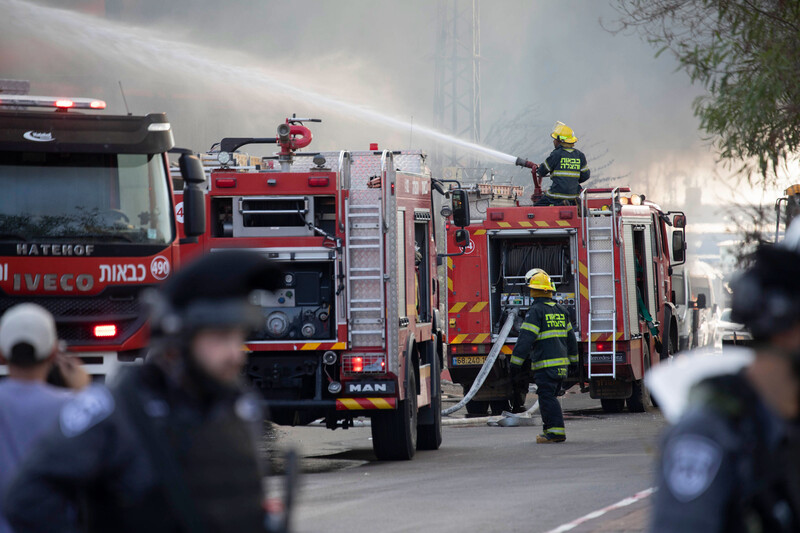
Firefighters attempt to extinguish a burning vehicle in front of a factory in Sderot, southern Israel, that was reportedly hit with rockets fired from Gaza on 12 November.
ActiveStills
Injured Palestinians are rushed to al-Shifa hospital in Gaza City after a series of Israeli attacks on 13 November.
ActiveStills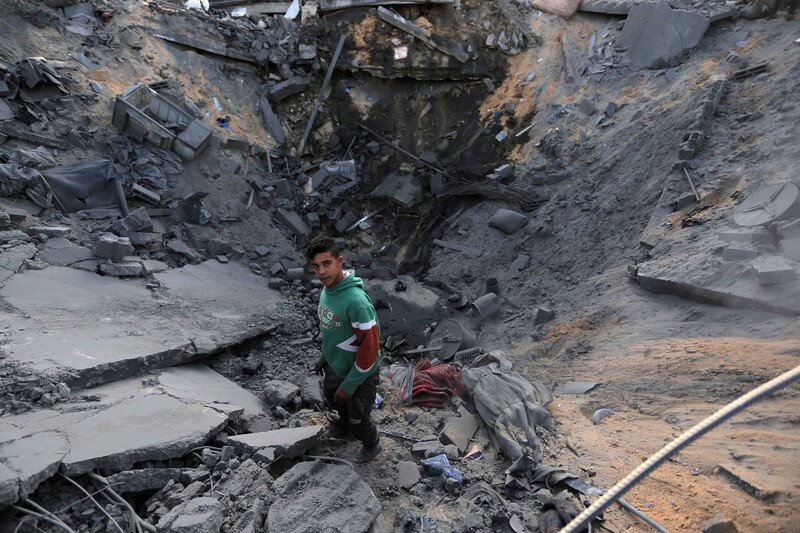
A Palestinian inspects the site of a home destroyed in an Israeli airstrike in Khan Younis, southern Gaza, on 14 November.
APA images
Three of the eight members of the al-Sawarka family — five of them children — who were killed the previous night in an Israeli airstrike on their home in Deir al-Balah, 14 November. A ninth member of the family died days later.
ActiveStills
Nour, one of the few members of the al-Sawarka family who survived an Israeli strike on their tin-roofed home in Deir al-Balah refugee camp, central Gaza, on 13 November. Nine members of the family were killed in the attack. Photographed at Shuhada al-Aqsa hospital on 15 November, Nour said, “Take a photo of me and show me.”
ActiveStills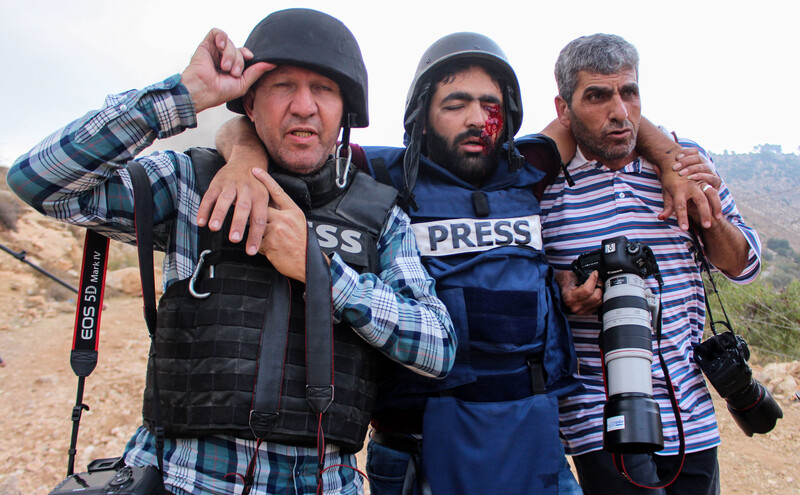
Palestinian cameraman Moath Amarneh bleeds after being hit in the face with shrapnel from an Israeli-fired bullet while covering confrontations in the West Bank village of Surif, near Hebron, on 15 November. Amarneh lost his left eye as a result of his injury.
APA images
A portrait of Muath al-Sawarka, killed along with eight family members in an Israeli airstrike days earlier, sits at the child’s school desk in Deir al-Balah, central Gaza Strip, on 16 November.
APA images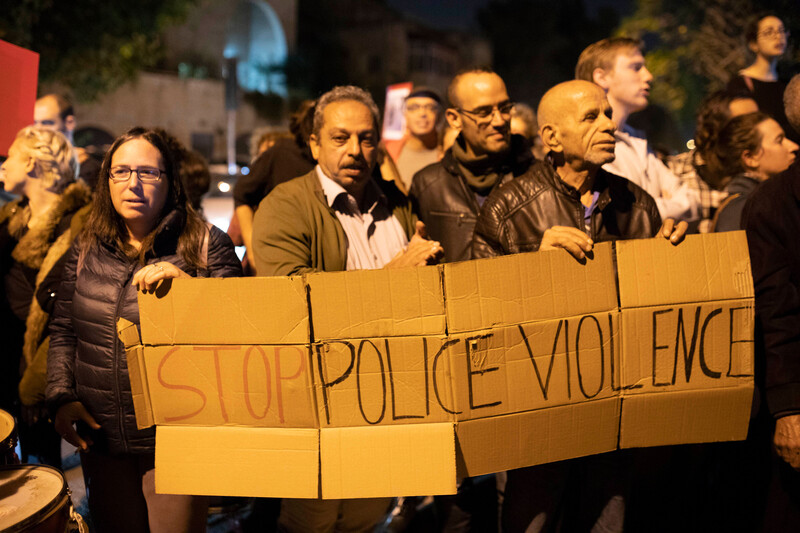
Activists demonstrate outside the home of the mayor of Jerusalem in protest of police oppression and violence in the East Jerusalem neighborhood of Issawiya, 16 November.
ActiveStills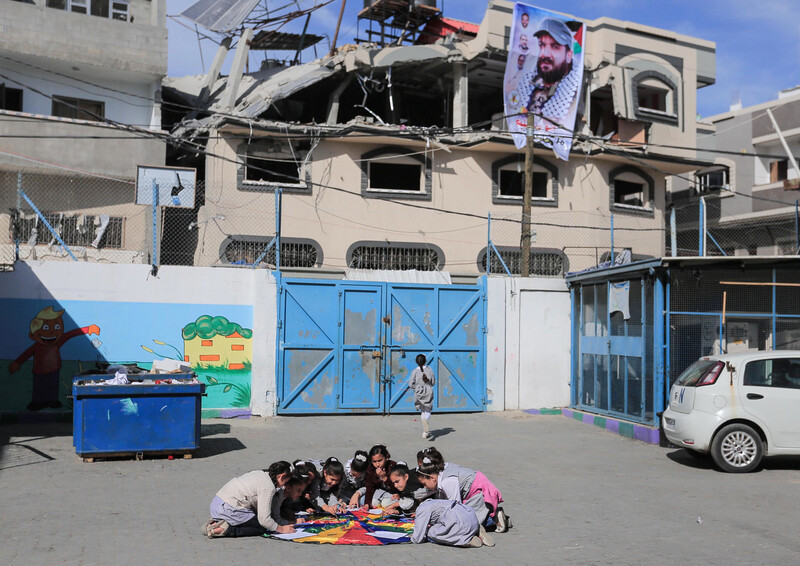
Palestinian girls play at their Gaza City school run by UNRWA, the UN agency for Palestine refugees, on 18 November. Matthias Schmale, director of UNRWA operations in Gaza, stated: “We have to recognize and address the psychological effects, the fear and the lasting trauma such escalations leave on the population.”
APA images
Palestinians and Ultra-Orthodox Jewish men from the Neturei Karta sect protest in support of injured Palestinian cameraman Moath Amarna in front of the Shuhada Street checkpoint in the West Bank city of Hebron, on 18 November.
APA images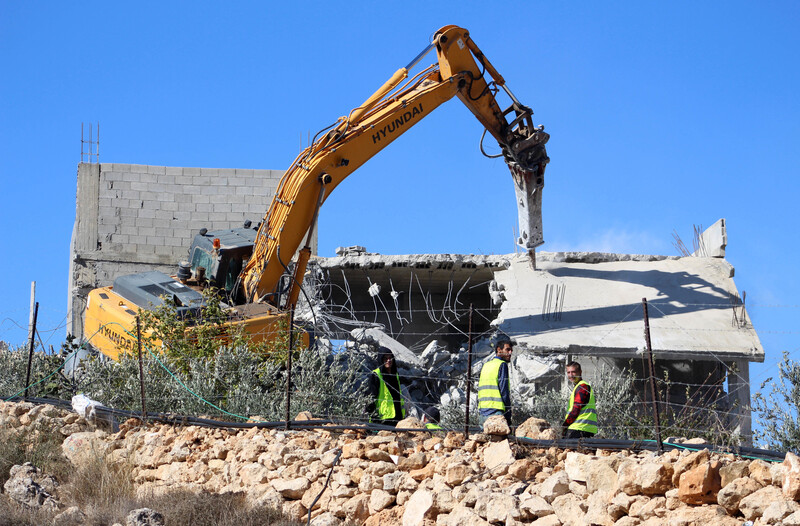
Israeli occupation forces demolish a Palestinian building on the pretext that it was built without a permit at al-Arroub refugee camp, north of Hebron in the southern West Bank, on 19 November.
APA images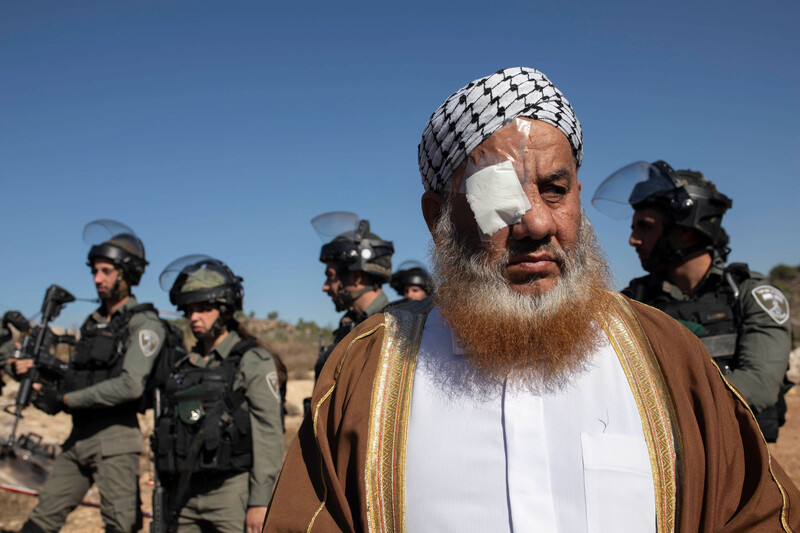
Palestinians and Israeli supporters protest against Israeli land confiscation in the village of Surif, north of Hebron in the occupied West Bank, on 22 November. Demonstrators also showed solidarity with Palestinian cameraman Moath Amarneh who lost his eye after being hit with shrapnel from an Israeli-fired bullet at the same location the previous week.
ActiveStills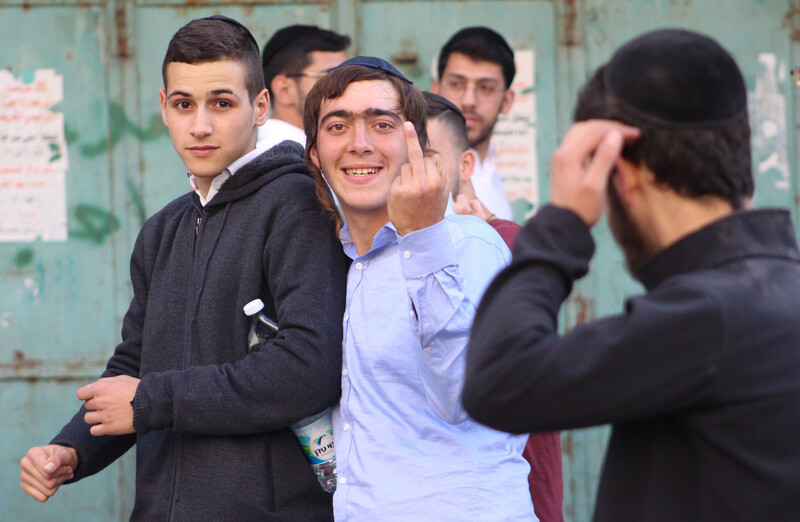
Israeli Ultra-Orthodox Jews make their way to visit the tomb of Othniel ben Kenaz in a Palestinian neighborhood of the divided West Bank city of Hebron on 23 November.
APA images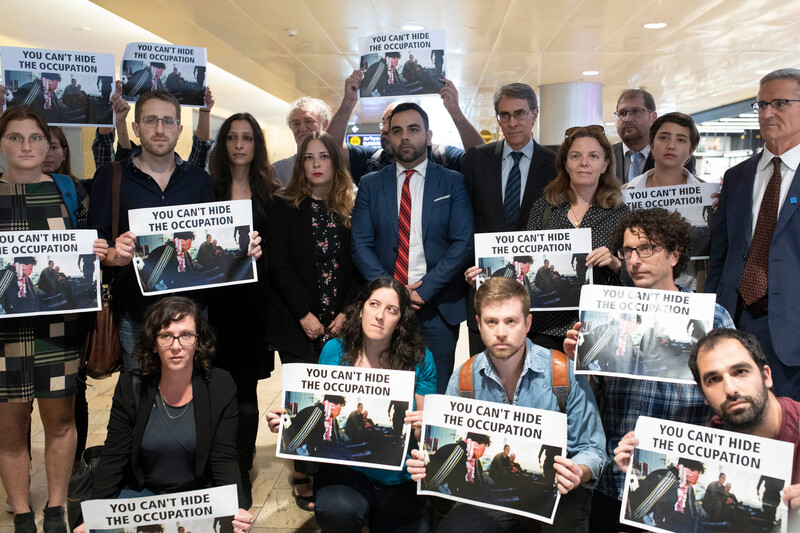
Omar Shakir (center, wearing a blue suit), the director of Human Rights Watch’s Jerusalem office, at Ben Gurion airport near Tel Aviv on 25 November upon being deported by Israel following a protracted legal battle. Israel first revoked Shakir’s work visa in May 2018 over his alleged support for BDS – the boycott, divestment and sanctions movement for Palestinian rights. Human Rights Watch has said that it takes no position on the BDS movement.
ActiveStills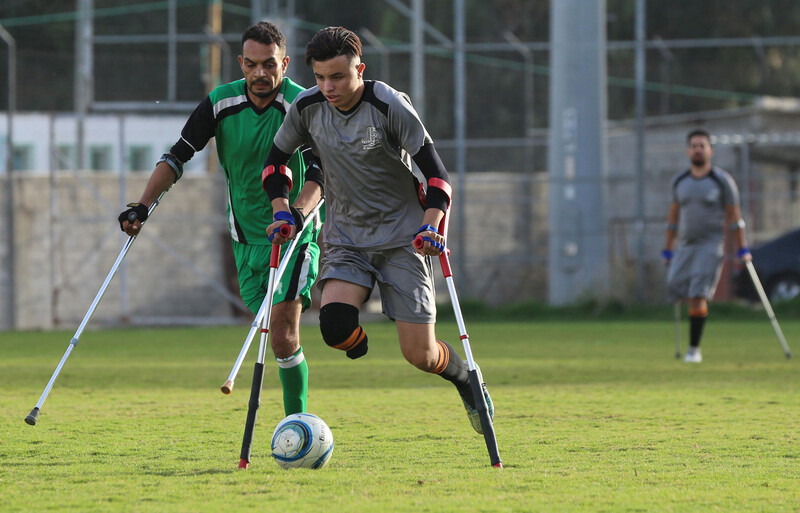
Athletes take part in the final match of the amputee football league in Gaza City on 26 November.
APA images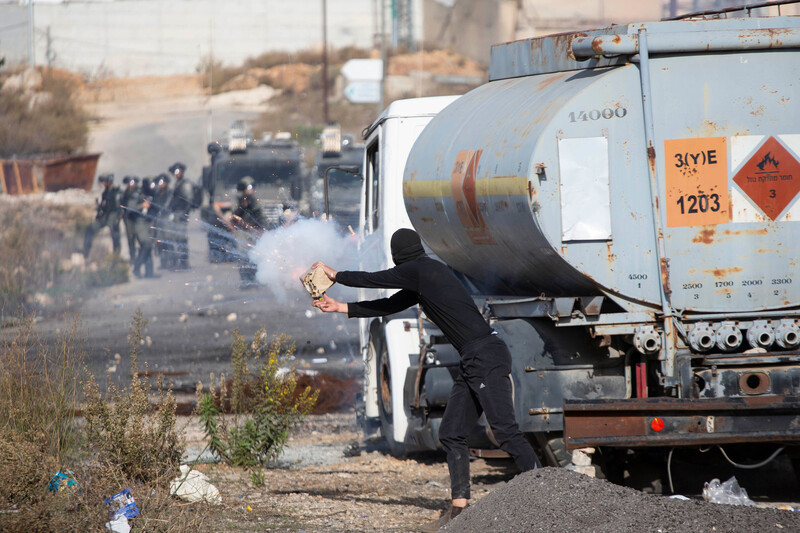
Israeli occupation forces fire tear gas as Palestinians take part in a “day of rage” against a recent US decision to no longer consider settlements in the West Bank illegal, DCO checkpoint near Ramallah, West Bank, 26 November.
ActiveStills
Palestinians in need receive financial aid from a Qatari grant outside the Gaza City post office on 27 November.
APA images

